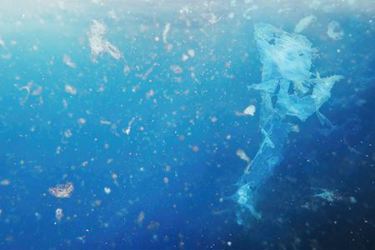Assessing Methods Of Measuring Microplastics In Water
By U.S. EPA

Microplastics have been found in surface waters worldwide — including in ponds, rivers, and the ocean. However, our ability to characterize microplastics in the environment is limited by the lack of technologies for rapidly and accurately identifying and quantifying microplastics. Although standard methods exist for collecting and preparing microplastic samples, the methods for analyzing samples and actually identifying microplastics within the sample are not as robust. Additionally, there are not many methods for analysis that researchers can conduct in the field; instead, most of these methods are lab-based and involve time- and resource-intensive techniques to prepare samples for analysis, such as chemical pretreatment.
There are additional challenges to microplastics analysis methods. For example, researchers often collect microplastics samples with plankton sampling nets, which can shed microplastics into the sample, affecting results. Additionally, microplastic particles can be difficult to differentiate between non-microplastic particles (e.g., microscopic rocks, sediment, etc.), so any method must be able to identify the particles as plastic polymers and not something else.
To help address these issues, in 2018, EPA’s Region 9 signed a Cooperative Research and Development Agreement (CRADA) with Draper, a not-for-profit research and development organization in Cambridge, Massachusetts. EPA and Draper worked together to evaluate existing microplastic capture and assessment technologies, with a goal of identifying those most suitable for use in field conditions. Through the CRADA, EPA and Draper sought to inform the scientific community on the potential of existing technologies and techniques for measuring microplastics in the environment.
The partners teamed up with researchers at the Woods Hole Oceanographic Institute to expand technology testing and evaluation. They focused on evaluating existing technologies to measure microplastics, while considering which ones would translate well to use in the field. For example, field-portable systems should have sturdy packaging and portable power electronics, and they should also minimize or eliminate the potential for contaminating the sample with additional microplastics (e.g., plankton nets). The researchers developed a two-part system to evaluate the suitability of 14 different techniques and technologies for field use and then assessed the techniques themselves. The techniques consisted of chemical, mechanical, and electrical operations to assess the volume of microplastics in a sample. The results of the study were published in “Field-Portable Microplastic Sensing in Aqueous Environments: A Perspective on Emerging Techniques” in Sensors. This study provides a thorough analysis of some existing techniques and technologies, and researchers can use this information to continue advancing ways to identify microplastics while in the field.
In 2021, Dr. Sheila Hemami, a critical collaborator in the CRADA, left Draper and went to Triple Ring Technologies to continue research in this area. In 2021, Triple Ring Technologies received an EPA Small Business Innovation Research (SBIR) award to move its portable, reagent-free microplastic sensor technology toward commercialization.
EPA continues to prioritize detecting and measuring microplastics in the environment and understanding the impact of microplastic in our waterways. Learn more at EPA Microplastics Research.
